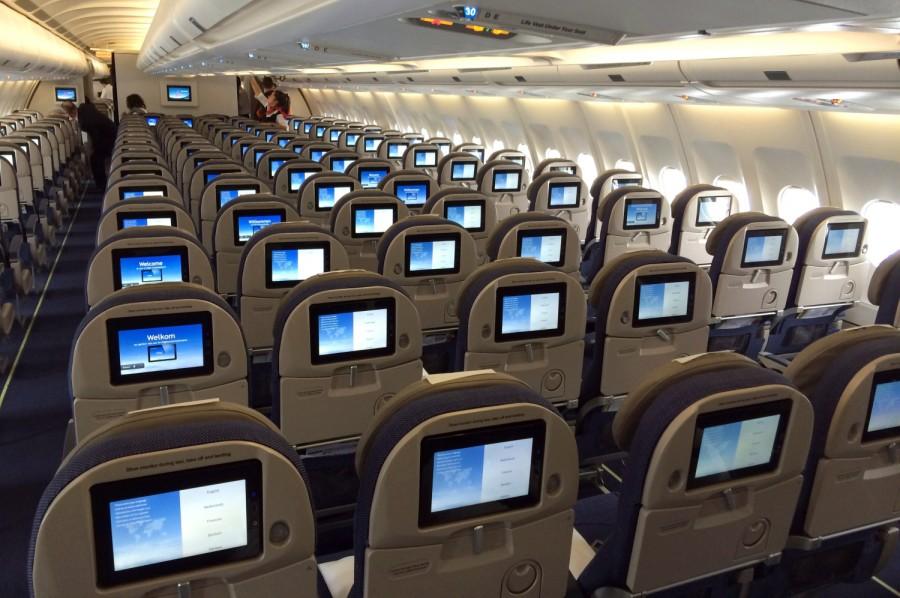Big Beef Over Small Seats
U.S. government debates changing the regulations for airline seats.
April 4, 2016
As summer vacation approaches, many students will be leaving Rocklin to go to far off distant places to enjoy their long-deserved break. Many of these places are only accessible by airplane.
Though flying is one of the most sufficient ways for people to get to their desired destinations, the process of getting there is not always great. From the stress of getting to the airport in enough time to reach their flight, standing in the dreaded security line, and then to finally sitting in a cramped seat for hours on end, flying is not exactly an enjoyable experience.
To make matters worse, airlines are making their seats more cramped than ever before. Since 1970, airlines have been pushing to make the seats smaller and smaller to save money on construction and to cram more people into planes.
Before the seats in airplanes shrunk the first time in 1970, the seats were originally 18 inches wide and legroom on average was 35 inches. After they made the seats smaller in 1970, the seats lessened to 16 inches wide, and legroom decreased to 31 inches. This has remained the average size of seats to this day.
While it may seem that taking a couple inches away from air seats isn’t a big deal, it has caused some concerns from health and safety officials.
There is concern that if there was an emergency on the plane that passengers would not be able to safely exit the aircraft. Just picture dozens of passengers frantically scrambling on top of each other trying to exit the airplane in the case of an emergency.
To add on to that, there is the worry that passengers on longer flights will be more prone to getting blood clots, eventually leading to thrombosis, from sitting on planes for long periods of time. Although there is no medical evidence showing that smaller seats directly leads to thrombosis, officials recommend passengers get up during their flight to walk up and down the aisles to stretch their legs. Decreasing the size of the aisles would only discourage people from getting up and walking around.
Government officials have acknowledged these problems, and in early February proposed a new bill that would set a seat size requirement. The House has not yet decided on what would be an appropriate seat size. When this new bill will be approved? There is no word yet, but until then, you might want to get comfy with the person sitting next to you.















